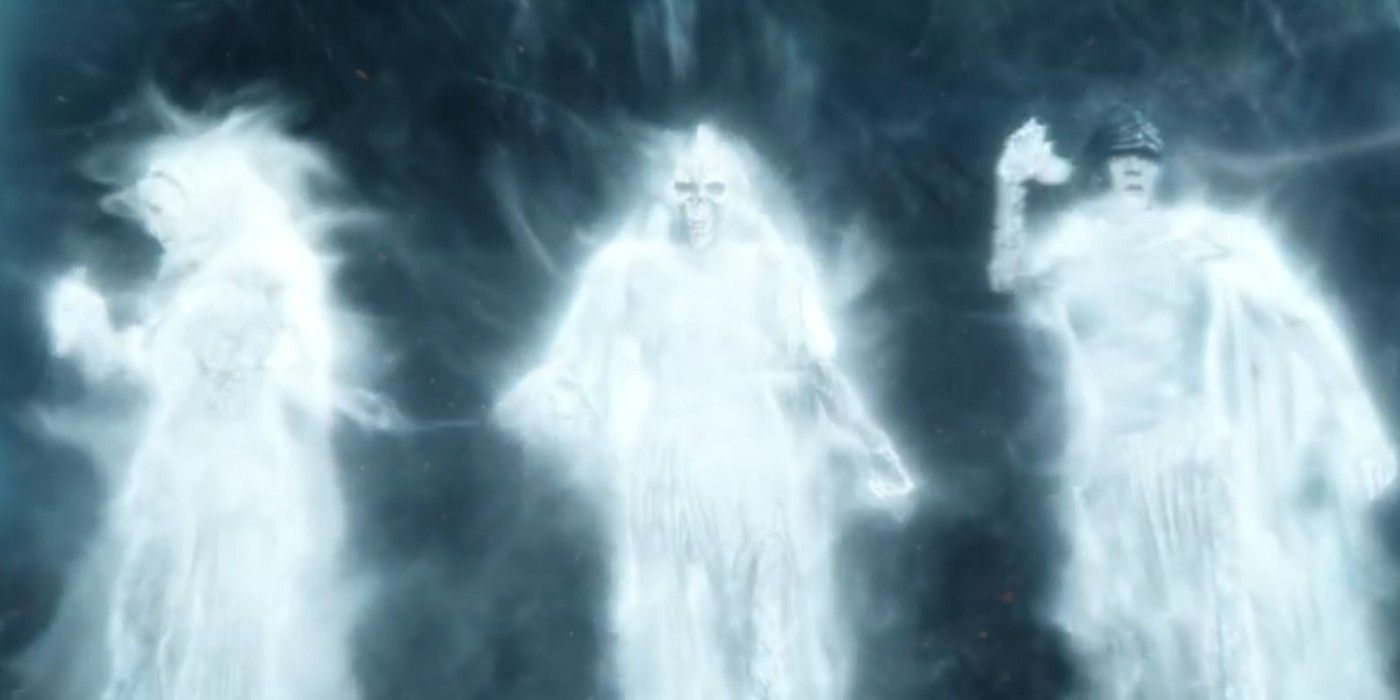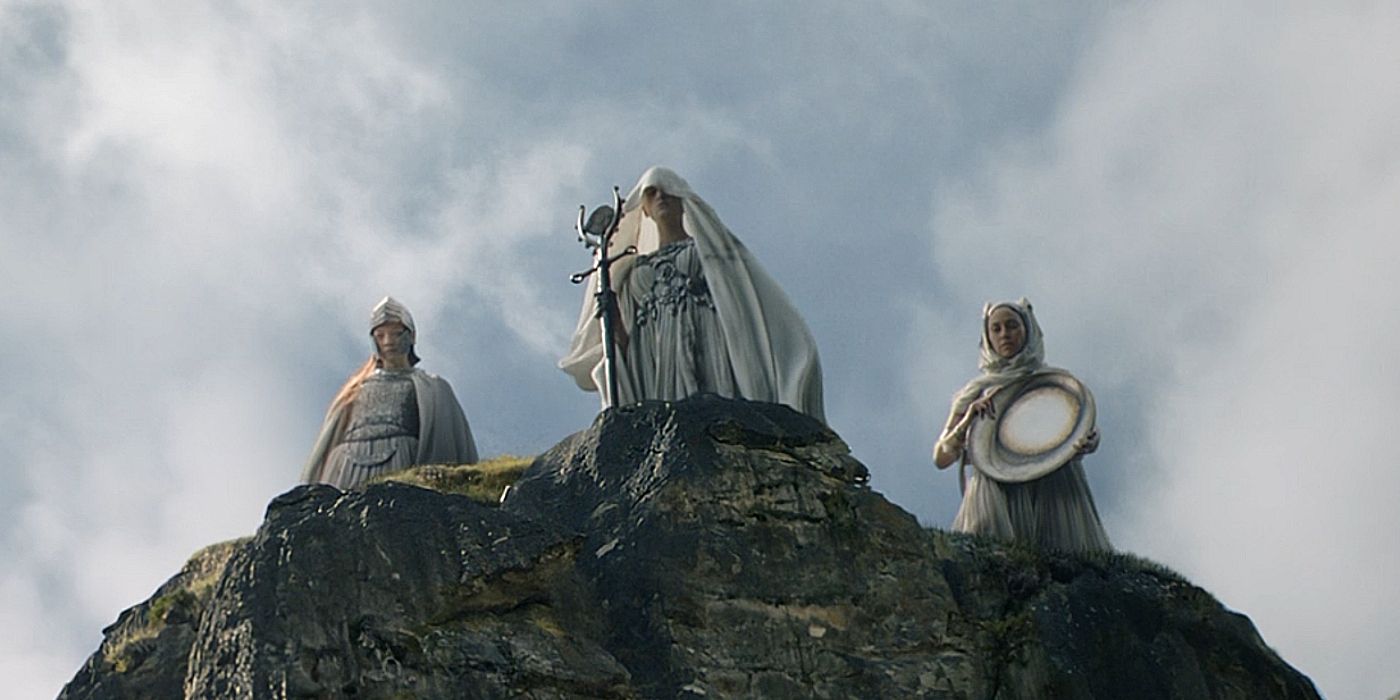The Lord of the Rings: The Rings of Power showrunners J.D. Payne and Patrick McKay explain why the witches look like Ringwraiths when they are vanquished. In Peter Jackson's beloved adaptation of J.R.R. Tolkien's Lord of the Rings, Frodo Baggins is famously tasked with taking the One Ring and tossing it into the fiery depths of Mount Doom. On their treacherous journey to Mordor, Frodo and his fellow hobbits are pursued by Nazgûl, also known as Ringwraiths, Sauron's most terrible servants in Middle-earth.
During the Rings of Power season 1 finale, the Stranger comes into contact with the mysterious trio who believe the Meteor Man is Lord Sauron. After Nori and the Harfoots manage to steal the leader's magical staff, the Stranger uses it to banish the trio into darkness. For a few brief moments, the Stranger's blinding Istar light illuminates the three witches as skeletal, spectral figures reminiscent of the Unseen Realm, a visual that many viewers interpreted as a callback to the Ringwraiths from Lord of the Rings.
During a recent interview with Vanity Fair, Panye and McKay responded to the observation that the three witches look like Ringwraiths when they were vanquished. The Rings of Power showrunners gave an explanation for the visual, saying that, similar to when Frodo puts on the One Ring and sees the Ringwraiths glowing, the witches being vanquished provides a window into the unseen world. McKay also says they were "riffing on the visual language" of the Nazgûl from Jackson's films. Read what they said below:
Payne: I think what you’re reading is, there are glimpses into the unseen world where the true form of something is revealed. You’re seeing what is underneath the form that they’ve been presenting. Were they defeated, or were they just temporarily vanquished? I think that’s a story point that people can be thinking about... That’s him seeing into the Unseen world. The ring takes you into that place where you can see the true form of things.
McKay: We’re riffing on the visual language of that. But also we like the idea that there are different forms of magic in Tolkien. The visual storytelling hopefully suggests that these witches are lesser conjurers than one of the wizards would be, and are bested here, but they escape in another form. Their true appearance in the world of the unseen is hideous and horrible and some kind of magic is making them beautiful. While the visual language is a little similar to the Nazgûl, we’re also thinking about Macbeth and we’re thinking about the old crones and the three witches and just trying to come up with something strange and weird. We know they come from Rhûn, and we know there are magic cults in Rhûn, which is one of the things Tolkien writes about. So maybe there’s a slightly different kind of magic and we can peel back the layers in future seasons.
How Rings Of Power Season 2 Could Develop The Witches
Known individually as the Dweller, the Nomad, and the Ascetic, the trio of witches originally hail from the magic cults in Rhûn and the Rings of Power season 1 finale confirmed they are followers of Sauron. The witches are pretty powerful in their own right, especially the Dweller, but as seen during the season 1 finale, they are no match against an Istar. With Payne suggesting the witches were "just temporarily vanquished" instead of being killed, it's very likely the trio returns in Rings of Power season 2.
Even after the season 1 finale, much remains unknown about the mysterious trio. In his writings, Tolkien does not mention much about Rhûn either. This actually gives the Rings of Power writers a lot of freedom to develop the witches however they please, potentially as wraith-like followers of Sauron who were predecessors to Nazgûl. This would explain why, when they are temporarily vanquished, the witches from The Lord of the Rings: The Rings of Power look remarkably similar to Ringwraiths.
Source: Vanity Fair


